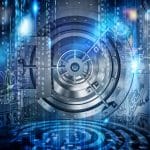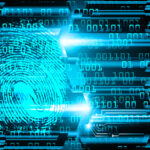IT decision-makers under pressure to demonstrate public cloud adoption cost savings

Unless you’re an Olympic athlete, you probably don’t want a stopwatch tracking your performance -- pushing you to work harder and move faster. But, according to Six Degrees’ newly published independent research, one in five IT decision-makers at SMEs feel that the clock is on them when implementing public cloud migration projects.
Six Degrees’ UK SME Cloud Intelligence Report 2024 found that the extent to which IT decision-makers feel rushed varies considerably between sectors. Finance and insurance (57 percent), blue light (55 percent) and education (42 percent) are impacted the most compared to those working in government (33 percent), healthcare (32 percent) and manufacturing (29 percent).
Cyber resilience vs. cybersecurity: Which is more critical?

Today, it’s not ‘if’ but ‘when’ any organization will be compromised. So, while it’s essential to strengthen cybersecurity across the entire organization, it’s also imperative to plan for a significant cyber-attack and the worst-case scenario. No business can be 100 percent secure but they can be resilient. Resilience is about continuing to thrive amidst adversity. This is why cyber resilience can be more important than cybersecurity. Every organization can take positive actions to improve their cyber resilience today, ensuring they can continue to win even if they are affected by an incident. They can start by having the right mindset and instilling a culture of cyber security and cyber resilience.
Strong cyber resilience will enable an organization to continue to operate key business processes, even when they are under attack. This means keeping people safe, guaranteeing data security, and protecting their reputation with their customers, partners, suppliers, industry and government regulators and other key stakeholders. Having a strong cyber resilience will save stress, time and money -- it will give you a return on your investment -- and you’ll be better prepared for uncertainty in the future.
Maximizing Microsoft Copilot's potential: The critical role of tenant consolidation

Microsoft recently reported that tens of thousands of working professionals are using Microsoft Copilot in their everyday operations. Experts expect this number to grow significantly as the tool integrates more seamlessly into workplace environments, driving productivity and efficiency. However, many companies may not realize that to get the most benefit from Copilot, they should consolidate tenants.
Let’s take a closer look at the benefits of tenant consolidation and how working professionals can leverage Microsoft Copilot to the fullest. With tenant consolidation, companies can transform operations and future-proof their organization amid remote workforces, economic pressures and security concerns, among other developing industry factors.
Third-party risk and resilience in DORA

In February 2016, it was reported that threat actors exploited vulnerabilities in the SWIFT banking network to steal more than $80 million from the central bank of Bangladesh. SWIFT, the global financial system’s main electronic payment system, which processes billions of dollars of transactions every day, was unprepared for the threat of a major cyber attack. The incident served as a pivotal wake-up call for the entire financial services industry, highlighting the previously underestimated systemic risks posed by unsecured systems. It reinforced the need for stronger security controls, safeguards and a more proactive approach to cybersecurity across the sector.
Today, organizations understand that it’s a matter of when -- not if -- their organization or supply chain is targeted with a cyber attack. Threats continue to increase in sophistication and frequency, particularly when it comes to ransomware.
How strong is Nvidia as an alternative investment?

Alternatives are an increasingly attractive investment opportunity. Why? An alternative investment offers an investor the opportunity to diversify their portfolio and mitigate risk.
A growing trend is investment in the technology sector, this is a good move and an opportunity I have spotted for myself. Technology is a global economic focus, countries, governments and organizations are racing to get up to speed and get ahead of technological innovation. Economic investment is a byproduct of the competition, so it is unwise not to see the investment opportunities here.
The increasing priority of security in data management

Data security has become a top concern for businesses across all industries. As organizations accumulate and leverage vast amounts of data to drive decision-making, the need to safeguard that information from both internal and external threats is more important than ever.
For companies managing sensitive customer information, intellectual property, or proprietary business insights, data security is no longer a negotiable priority -- it’s a critical component in strengthening your overall security strategy.
Implementing post-quantum cryptography (PQC) in modern systems

Most experts predict a quantum computer capable of breaking RSA and ECC encryption will be developed within the next decade. Virtually all of today’s security systems utilize RSA and ECC algorithms, which means the window to defend against quantum-powered attacks is rapidly closing.
The National Institute of Science and Technology (NIST) has developed new post-quantum cryptography algorithms that are secure against quantum computing attacks. These standards were released in August 2024. With new standards finalized, companies must act now to begin migrating to PQC.
Tackling information overload in the age of AI

Agile decision-making is often hampered by the volume and complexity of unstructured data. That’s where AI can help.
In 2022, the U.S. Congress passed the Inflation Reduction Act (IRA), which allocated billions in investment to clean energy. This set off a race among private equity and credit firms to identify potential beneficiaries -- the companies throughout the clean energy supply chain that may need additional capital to take advantage of the new opportunities the IRA would create. It turned out to be quite a data challenge.
The problem with third-party breaches: A data protection dilemma

Time and time again, organizations face an escalating threat to their data: Third-party breaches. As businesses increasingly rely on external vendors and partners for various services, the security of sensitive information becomes more vulnerable. This poses the question: Are traditional security measures still effective or obsolete in protecting vital information?
There has been a notable increase in third-party breaches, with headlines featuring Snowflake, Santander and Ticketmaster as recent victims. These incidents highlight that vulnerabilities are inherent in our systems, making no organization immune to such attacks.
Improving SysAdmin communications with business leadership

Systems Administrators make up the backbone of any organization’s technical infrastructure. Considering their range of responsibilities for maintaining the stability and performance of servers, networks, databases, software platforms, security tools, cloud services, and endpoints, when they talk leaders should listen.
SysAdmins need the organizational and financial support of their business leaders to do their jobs but can often find they aren't always on the same page. For example, in a recent survey on trends in IT, members of the C-suite and IT professionals responded very differently to questions regarding their organization’s network. C-suite respondents were nearly four times more likely to report their organization makes daily network configuration changes compared to technicians, and were nearly twice as confident as IT technicians in the effectiveness of their network tools for supporting a remote or hybrid workforce.
Offering employees choices to combat SaaS sprawl

The ease with which employees can sign up for unsanctioned cloud services continues to haunt security operations teams. Call it cloud sprawl, SaaS sprawl, or identity sprawl -- all variations on the same theme: Workers or departments signing up for unmanaged cloud services that businesses might not even know about, resulting in redundant services, unmanaged subscriptions, and security debt. In 2023, companies used an average of 112 different software-as-a-service (SaaS) applications, down slightly from the 2022 peak of 130, and those are conservative estimates.
SaaS sprawl is both an IT management and security problem -- it complements Shadow IT. Increasingly, CISOs recognize the issue but often take steps that turn their employees into adversaries, not allies.
Non-human users pose a serious identity management challenge

Identity and access management (IAM) programs put a lot of emphasis on users, for the obvious reason that compromising user identities is the prime attack vector for ransomware and other threat actors. But while strengthening access and permission controls for employees, third parties and other stakeholders, too many organizations overlook a vast trove of network identities that can be equally vulnerable to attack -- the non-human identities (NHIs) that are proliferating in the cloud.
The number of non-human identities, ranging from API keys and cloud services to DevOps tools and software bots, has exploded in recent years. By some estimates they are now outnumbering human users on the network by 45-1. The tools and services that comprise non-human identities can significantly increase efficiency and productivity, but they greatly expand an organization’s attack surface if they’re not properly protected. And too many of them aren’t protected.
7 best infrastructure monitoring tools for your business

Cloud-native application infrastructure serves as a powerful equalizer, enabling idea-driven teams to access the resources they need to bring their visions to life, no matter their location. However, this convenience introduces new layers of complexity. Each component of the multifaceted structures that underpin modern applications requires careful observation, orchestration, and optimization.
The right infrastructure monitoring tools can play a crucial role in helping your organization achieve higher efficiency and minimize downtime. Instead of relying on resource-draining, custom-built solutions, these tools offer a unified approach that acts as a force multiplier for your teams. Just like cloud development itself, well-chosen infrastructure monitoring software empowers you to achieve more with less. Here's how to select the best tools for your needs.
Building a security-first culture for MSPs: Always ready, always protected

For IT professionals and MSPs, a company’s security posture is influenced not only by technology but also by its team's daily actions. Whether intentional or accidental, human behavior plays a significant role in either fortifying or undermining security measures.
Verizon Business’ 2024 Data Breach Investigation Report revealed that 68 percent of breaches this year involved a non-malicious human element, such as people falling for phishing schemes, mishandling sensitive information or getting tricked by a social engineering ploy.
The biggest mistake organizations make when implementing AI chatbots

Worldwide spending on chatbots is expected to reach $72 billion by 2028, up from $12 billion in 2023, and many organizations are scrambling to keep pace. As companies race to develop advanced chatbots, some are compromising performance by prioritizing data quantity over quality. Just adding data to a chatbot’s knowledge base without any quality control guardrails will result in outputs that are low-quality, incorrect, or even offensive.
This highlights the critical need for rigorous data hygiene practices to ensure accurate and up-to-date conversational AI software responses.
© 1998-2025 BetaNews, Inc. All Rights Reserved. About Us - Privacy Policy - Cookie Policy - Sitemap.
Regional iGaming Content
